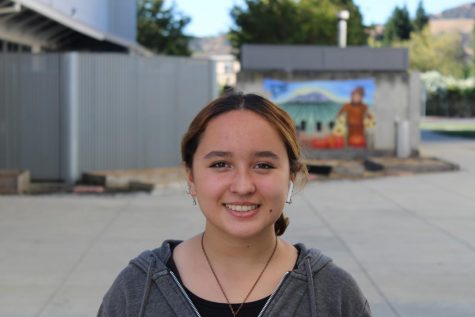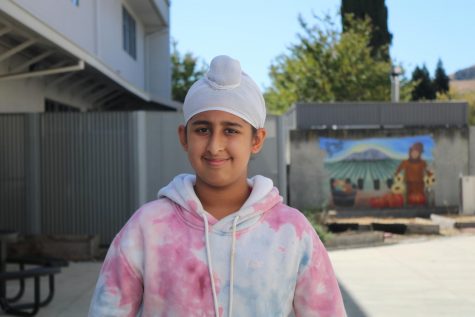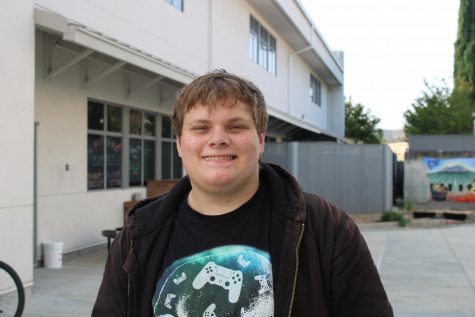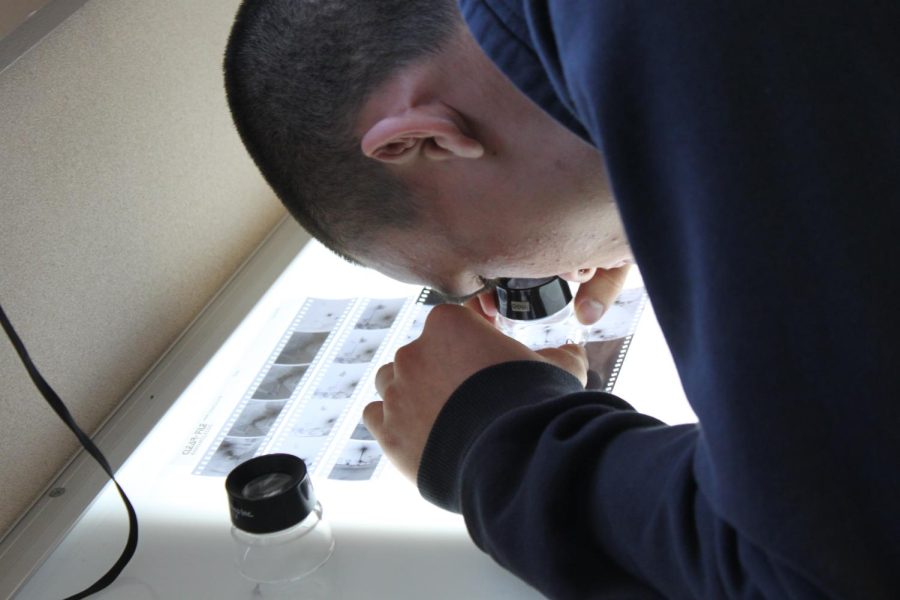Say cheese!
Cal High’s film and digital photography classes offer students different looks behind the lens
Junior Kevin Goodman checks the negative images of some photos he took in Paul Fortayon’s photography class. Fortayon teaches the photography and advanced photography classes that focus on film, while Jennifer Bible and Kathleen Seabury teach Cal High’s digital photography classes.
Since the advent of digital photography, photos shot on authentic film have become much less common over the years.
However, Cal High students interested in photography have a chance to experience the process of developing film photos and learning digital photography software in the school’s year-long elective photo classes.
In teacher Paul Fortayon’s traditional photo class, students get to take their own creative photos in a professional way while getting the hands-on experience of developing their shots like those edgy, cool kids in movies and TV shows, standing in the school’s dark room and looking mysterious.
Photo students tend to have less experience shooting film compared to taking digital photos. As a result, a lot of first year students don’t know as much about film photography.
Students learn the process of developing film in the class ‘s darkroom, learning the factors that result in a stronger quality photo. Many students become engaged in the class because of the appeal of using an older method that existed long before digital photography did.
Sophomore Natalie Clark, a first time photo student, thinks the class may be intimidating for some because developing film is so foreign, but she said it’s worth it when she sees the final product of her shots.
“I like the fact that I get to develop my own photos,” Clark said. “It’s fun being in the darkroom.”
Senior Kadence MacPherson has taken the class since she was a sophomore. She was hesitant about taking the class at first, but she has taken a real liking to it and plans to continue the passion in college.
“It’s just an amazing experience,” said MacPherson, who even paid her brother to act as a model for one of her photo shoots.
Some elements of photography that students learn are how to take a satisfying and high quality photo, involve composition, the rule of thirds, and lighting. These lessons all contribute to students creating their best images possible, as they end up developing their three of their best photos out of the two dozen they have taken throughout the year.
Fortayon, who has taught Cal’s photo class since 1999, believes the main difference between digital and film photography is the processes of taking the photos.
“Instead of thinking about what you just shot, you are thinking about what you’re about to shoot,¨ said Fortayon, who teaches four sections of photography.
The introductory photo class provides students with the fundamentals and serves as a prerequisite for those students who want to enroll in the one advanced photo class,also taught by Fortayon.
In the advanced class, students learn advanced techniques, hear from guest speakers, and get to display their work in art galleries and shows. There is a current show month-long show on display at the Alcosta Senior & Community Center Art Gallery that concludes today with a reception from 4-5:30 p.m.
“The best part of the whole process is when students are taking images of things that they are passionate about,” Fortayon said. “[They] produce it themselves in the darkroom and they come out with an amazing print that they are proud of.”
Junior Daniel Choi likes taking photos that capture movement and are not forcibly placed. He thinks that he can see the movement in a film photo.
“It’s obvious to see if it’s not,” Choi said.
Students get to take the majority of their photos out of school with class cameras they’re allowed to take home. It’s clear that students enjoy their photos more when they are inspired on the spot.
“I went on vacation and I took a bunch of photos of my family and the boat that we were staying on and those were probably my favorites,” Clark said.
Senior Samantha James, who has taken photo classes since she was a sophomore, said one of her favorite photos is a self portrait. James was able to create a photo that she wanted to be “messy but keeping it together” by mixing a lot of things up with her clothes, look and background to complete a prompt she made up and capture it into a photo she enjoyed.
“It was my most unique,” James said.
Digital Photography
Over the years, digital photography has dominated the photography, video, and art industries.
Aside from serving the fundamental purpose of recording a scenic view or a humorous video, digital cameras have attracted more people to the field, developing new hobbies and professions as well.
Cal’s digital photography class has been teaching students about the basics of digital photography and cameras, including editing with Photoshop.
The digital photography class falls under the Fine Arts requirement for high school and is articulated with Diablo Valley College, providing students with three free college units if they meet certain requirements in the class.
Jennifer Bible has taught digital photography since 2013, when the previous instructor, Steve Dick, retired.
Bible said the basics of the class are what makes a good photo, how to make a good photo, and then how to edit their own photos and photos online as well.
“That’s where the digital aspect comes in utilizing digital equipment, which is less waste,” Bible said. “It allows us to take a lot of photos in order to get a few great photos and then we can edit them as well and make them even better.”
Bible usually teaches either three or four sections of digital photography, so about 125 students a year. She also teaches the computer graphic arts class.
Bible’s background knowledge on the subject comes from being a graphic designer, where she spent 15 years designing professional sports events like the Super Bowl, the MLB All-Star Game, NHL Winter Classic, NBA All-Star Game, [and] the NHL All-Star Game.
“I had to edit and manipulate photography for a lot of the work that we would do there, so that’s where the Photoshop skills came in and utilizing that,” said Bible, who personally enjoys landscape and still life photography.
Bible became a teacher because she wanted a lifestyle change. As she lived in Danville, so it was easy transition teaching at Cal.
Junior Aidan Auyeung is taking digital photography this year because it seemed like an interesting class.
“It’s easy to learn, and the projects are interesting,” said Auyeung, who did not have prior experience with digital photography before enrolling in the class.
Auyeung said he’s learned to use Photoshop to edit his photos. He says that his favorite project of the class was “Cinema graph”, where one part of an image is moving, while another part is still. Recently, students were working on portrait photography.
Like Auyeung, junior Sinoe Hingano did not have past knowledge of digital photography before taking the class.
“You are exposed to a lot of forms of digital art, and you have a lot of freedom to express creativity,” Hingano said.
Hingano said his favorite assignment this year was the “Landscape in a Bottle” project that allowed students to actually Photoshop a landscape image into a bottle.
Many of these bottles are displayed on the second floor of the Fine Arts building.
“[The class is] a great way to explore a visual medium,” Bible said. “Everything we look at is visual these days. You know you watch your phone all the time. It’s all-around a digital medium.
“So understanding how digital images work and how they can convey a message I think is important to all businesses,” Bible continued. “So I really think you can only help you further in any career you choose to go into.”

Erica Dembrowicz is in her first year taking photos for The Californian and is a junior at Cal High. Out of school she likes to read, listen to music,...

Parwaan Virk is a freshman at Cal High School, and this is his first year as a news reporter for The Californian. He’s always had a passion for writing...

Ryan Syms is a junior at Cal High. He loves to take photos and he is a photographer for the Californian this year.





